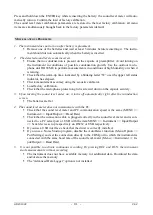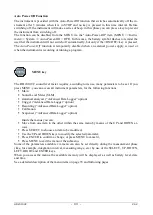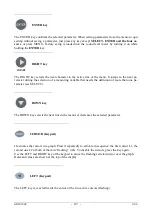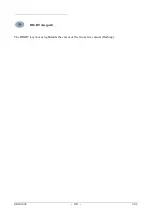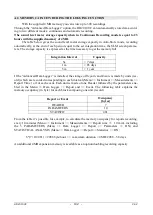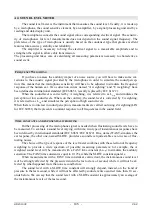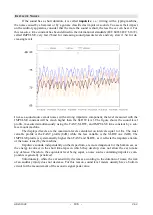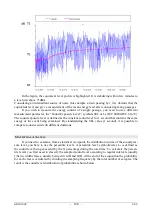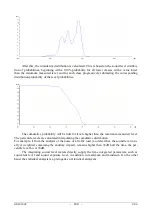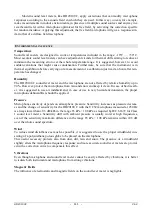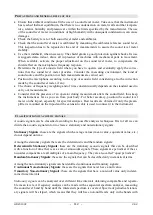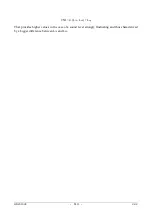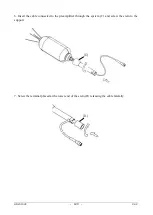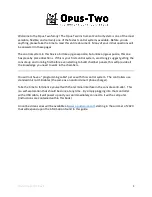
HD2010UC
- 105 -
V4.2
A4: SOUND LEVEL METER
The sound level meter is the instrument that measures the sound level. Usually, it is made up
by a microphone, the sound sensitive element, by an amplifier, by a signal processing unit and by a
reading and data display unit.
The microphone converts the sound signal into a corresponding electrical signal. The sensitiv-
ity of microphones for level measurements does not depend on the sound signal frequency. The
preference of the type of microphone is usually based on the condenser type that grants excellent
features like accuracy, stability and reliability.
The amplifier is necessary to bring the electrical signal to a measurable amplitude and to
strengthen the signal to allow cable transmission.
The processing unit takes care of calculating all measuring parameters necessary to characterize a
sound event.
F
REQUENCY
W
EIGHTING
If you have to assess the auditory impact of a noise source, you will have to make some cor-
rections to the acoustic signal provided by the microphone in order to simulate the sound percep-
tion; this means that the microphone sensitivity will have to be adjusted to simulate the frequency
response of the human ear. Two correction curves named “A weighting” and “C weighting” have
been defined as international standard (IEC 60651, recently replaced by IEC 61672).
When the sound level is corrected by A weighting, it is referred to as L
Ap,
and simulates the
perception of low sound levels. When, on the contrary, the sound level is corrected by C weighting,
it is referred to as L
Cp
, and simulates the perception of high sound levels.
When there is no interest in sound perception, measurements are carried out using Z weighting (LIN
for IEC 60651) that represents a constant response to all frequencies in the sound field.
T
IME CONSTANTS AND EXPONENTIAL WEIGHTING
Further processing of the microphone signal is needed when fluctuating sound levels have to
be measured. To evaluate a sound level varying with time, two type of instantaneous responses have
been defined by international standards (IEC 60651/IEC 61672). One, named FAST, simulates the
ear response, the other one, named SLOW, provides a sound level quite stable even in case of fluc-
tuating noises.
The choice of the type of response of the level meter combines with the selection of frequency
weighting to provide a wide spectrum of possible measuring parameters; for example, the A
weighted sound level will be measured with a FAST time constant (L
FAp
) to simulate the auditory
sensation. The FAST time constant is equal to 0.125s, while the SLOW constant equals 1s.
When measurements with a FAST time constant are carried out, the instantaneous sound level
will be strongly affected by the pressure trend in the last octave of second, while it will not be af-
fected by what happened more than one second before.
The sound level with a SLOW time constant will strongly depend, instead, on the trend of
pressure in the last second, while it will not be affected by sound events occurred more than 10 sec-
onds before. We can say that the sound level with a SLOW constant is approximately an average of
the instantaneous levels of the last second.
Summary of Contents for DeltaOHM HD2010UC
Page 2: ...HD2010UC 2 V4 2 ...
Page 129: ...HD2010UC 129 V4 2 NOTES ...
Page 130: ...HD2010UC 130 V4 2 NOTES ...
Page 131: ......

